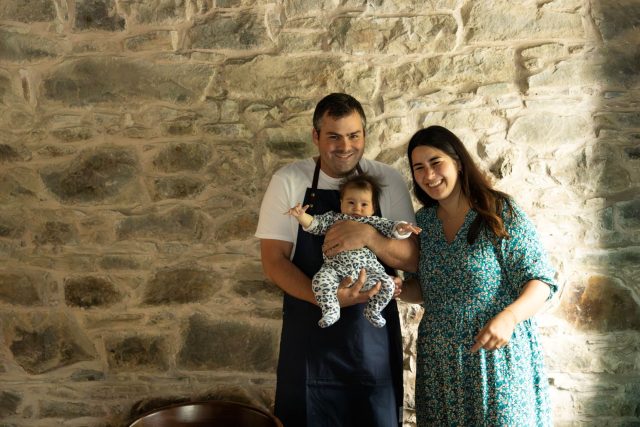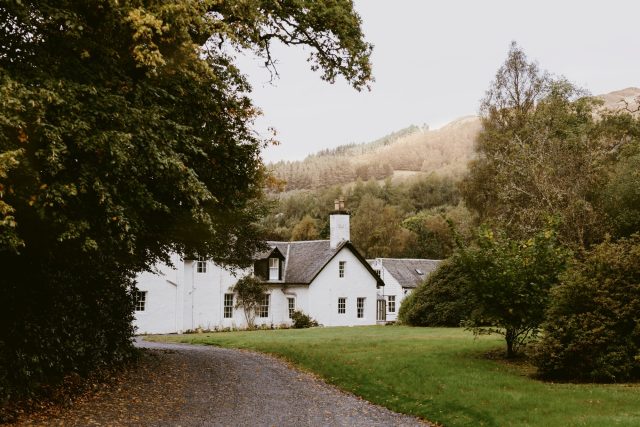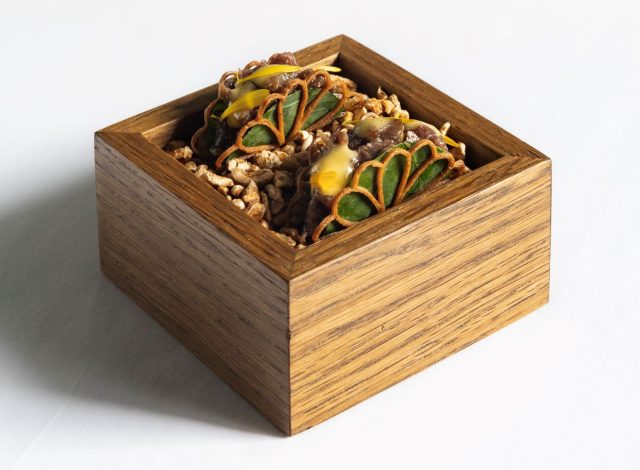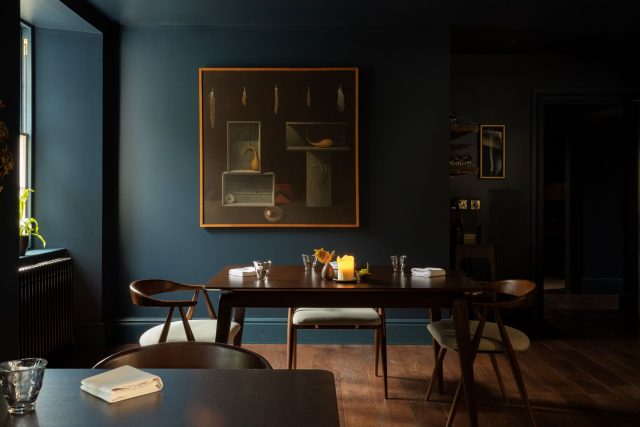Unfiltered: Matilda Ruffle, Killiecrankie House
Douglas Blyde hears how Matilda Ruffle authors a compelling wine and sake selection alongside the “boundary-pushing” cuisine of her chef husband, Tom Tsappis, at Killiecrankie House in Perthshire, The Scotsman’s Scottish Restaurant of the Year 2023.

How did you meet?
In the Hobgoblin pub in Roppongi, Tokyo, not watching the England-Scotland Six Nations match that was on at the time. Tom had arrived in Tokyo a few weeks previous and had discovered that the staff here spoke English. I had been dragged there by a friend who enjoyed watching rugby.
What did you do before?
When we met, Tom was an FX broker and I was working in advertising, at that time for Coca-Cola.
What was ‘Elia London’?
A weekly supper club hosted in our little flat in East Dulwich. Tom likes to refer to it as his “paid testing” for the restaurant – a chance to develop a cooking style without the pressures of overheads, staff et al.
What does Killiecrankie mean?
In Gaelic, Killiecrankie means “aspen wood”, hence our aspen leaf logo.
How did you come to acquire Killiecrankie House?
Covid expedited the move to Killiecrankie. The supper club was of course on hold, whilst I was working every hour under the sun for my main advertising client, Dettol, which, as you can imagine, had gone into overdrive during the global pandemic. Plus, being holed up in a tiny apartment in London in lockdown was pretty grim. So we decided that our “five-year plan” should be brought forward and we started hunting for the perfect spot for our restaurant with rooms. Having grown up in Scotland, I was keen to get back there. We looked at a number of properties before deciding Killiecrankie was the one – it had a decent amount of land, enough for a kitchen garden, and was in a beautiful location which felt more remote than it actually was.

Was it in pristine, fit-for-purpose condition?
It wasn’t pristine, but it had been running as a hotel right up until we got the keys. However, once we started peeling back the layers of wallpaper, as anyone who has watched Grand Designs will know, all sorts of issues started to reveal themselves, and we ended up having to do a lot more work than we had initially set out to do. Whilst the external walls remain, we pretty much gutted the interior and started again, including putting foundations down at the back of the building where there had simply been mud, and installing new plumbing, boilers, heating, wiring and more.
Did the locals give you, two former Londoners, an instant and enduring warm welcome?
I think that what we were doing was considered something of a curiosity amongst those who lived locally, and to some extent maybe still is… Those who have come by have been generally supportive though, with many of them becoming regular customers of ours.
What is the most memorable thing a critic has said about the experience?
The New York Times described us as “a boundary-pushing tasting menu with lots of cheek and zero haughtiness”, which we were quite pleased with.
How has the food changed from the previous ownership to today?
The previous incarnation of the restaurant offered an a la carte, much more classical style of cuisine, firmly rooted in French technique and championing things like local game. It was very well regarded and had won some awards in its time but we never managed to eat in it ourselves. Our menu today is an extensive multi-course tasting menu (ranging between 14-20 usually) with Japanese influences and inspired by the structure of Kaiseki, so very different.

Is it true you have created dishes inspired by Irn-Bru and Tunnock’s Tea Cakes? Is this supremely ironic?
We are trying to champion the food of Scotland in our own way. All of it.
Describe your list?
First and foremost the wines have to be delicious, so the list consists of wines that we ourselves would like to drink. It’s quite varied, covering both the classic and the esoteric, and is always changing. It also has a decent sake selection, due to my Japanese heritage, and because of the Japanese influences in the food.
Why does it feature Chinese wines?
My dad established Treaty Port Vineyards in Shandong province in 2004. He was the first to establish a vineyard in the region, which now boasts seven vineyards, including Château Lafite Rothschild, who last year bought the majority of my dad’s Treaty Port vineyard. His aim was to make high-quality, low-quantity Chinese wine for the Chinese palate – hence the tannins are quite low and they tend to be quite fruit-forward, which works well with Chinese cuisine.
Partner Content
What do you offer via Coravin?
The delicious “Guinevere” Chardonnay by Gusbourne. Whilst English sparkling wines have become popular, it’s great to see English still wines start to get some recognition. We also have Château d’Yquem on by the glass at Tom’s insistence.
You are participating in this October’s Sake Seafood Sensations campaign – are you the most sake-aware restaurant in Scotland?
I can’t say categorically that we are, but we must be very high up the list. We have a relatively long sake list, especially for a restaurant of our size – it has always featured in our pairings, and we also use it in the kitchen and in cocktails in the bar. We are certainly doing our bit to shine a spotlight on it.
What has been a particularly memorable food and drink pairing?
We actually had a beer made for us by a local craft brewery, Wasted Degrees. We took them a rich squid dish on our menu because we thought it would be great to pair it with beer. We had a wonderful time testing the various iterations of the beer and ultimately landed on a dry-hopped lager, which brings a refreshing lightness to the intense dish, and the hops give a citrussy pithiness that cuts through all the richness.
How seriously do you take the non-alcoholic pairing?
Incredibly seriously. We are a rural restaurant and many of our customers have to drive to get to us. It would pain me to see them with no alternative to drink other than Coke. The non-alcoholic pairing has been a mainstay of our offering since we opened the doors here. We put a lot of work into delivering something that is just as interesting and delicious as the alcoholic pairing.
From what starting point do you decide what is on a custom whisky tasting?
We try to offer a range of styles from across the different regions, but above all to showcase whiskies with different stories to tell – whether that is a story about the distillery, the producer or the production process itself.
Who devises the cocktails in the art deco bar, and does the ‘Killiecrankie Cure-All’ really cure all?
Niall our bartender is in charge of the cocktails and has been great at taking on the task of developing a creative cocktail list. The Cure-All isn’t currently on the menu. We try to keep the drinks list as seasonal as the food is, both in reference to the ingredients and how the drinks feel, but in the cold Perthshire winters, it certainly feels like it might be curing something.

How substantial is your team?
We have a tiny team. There are eight of us including the housekeeper and a full-time gardener. We, like every hospitality business right now, would love more staff, but getting the right people is no easy thing.
Where else do you enjoy eating?
We are willing to travel for food – last November we went all the way to Oslo to eat at Maaemo which we thoroughly enjoyed. In January we drove to Northumberland and back to eat dinner at the wonderful Pine. In November we are on holiday to Hong Kong and Japan to fill our boots. This December, we are heading to Copenhagen to eat at Alchemist. My favourite places closer to home are The Kinneuchar Inn in Fife for maybe the best pies in the country or The Manchurian in Dundee for some lunchtime dim sum.
What advice you have been given?
Everybody likes to give advice to us, especially our families. Tom always rejects advice off hand no matter how useful it may be, whereas I always consider it. It is a balancing act that seems to work in most instances.
How do you unwind?
We have a five-month-old baby, so relaxing isn’t really on the cards at the moment. At least not for the next 20 years or so. Occasionally we might get a board game out just to look at the box a while, but who are we kidding?
Killiecrankie House is participating in this October’s Sake Seafood Sensations campaign showcasing the harmony and compatibility of sake with seafood over three pairings.
Killiecrankie House – Perthshire, PH16 5LG; 01796 473213; hello@killiecrankiehouse.com; killiecrankiehouse.com
Related news
Carlsberg boosts presence in China with restaurant guide tie-up




